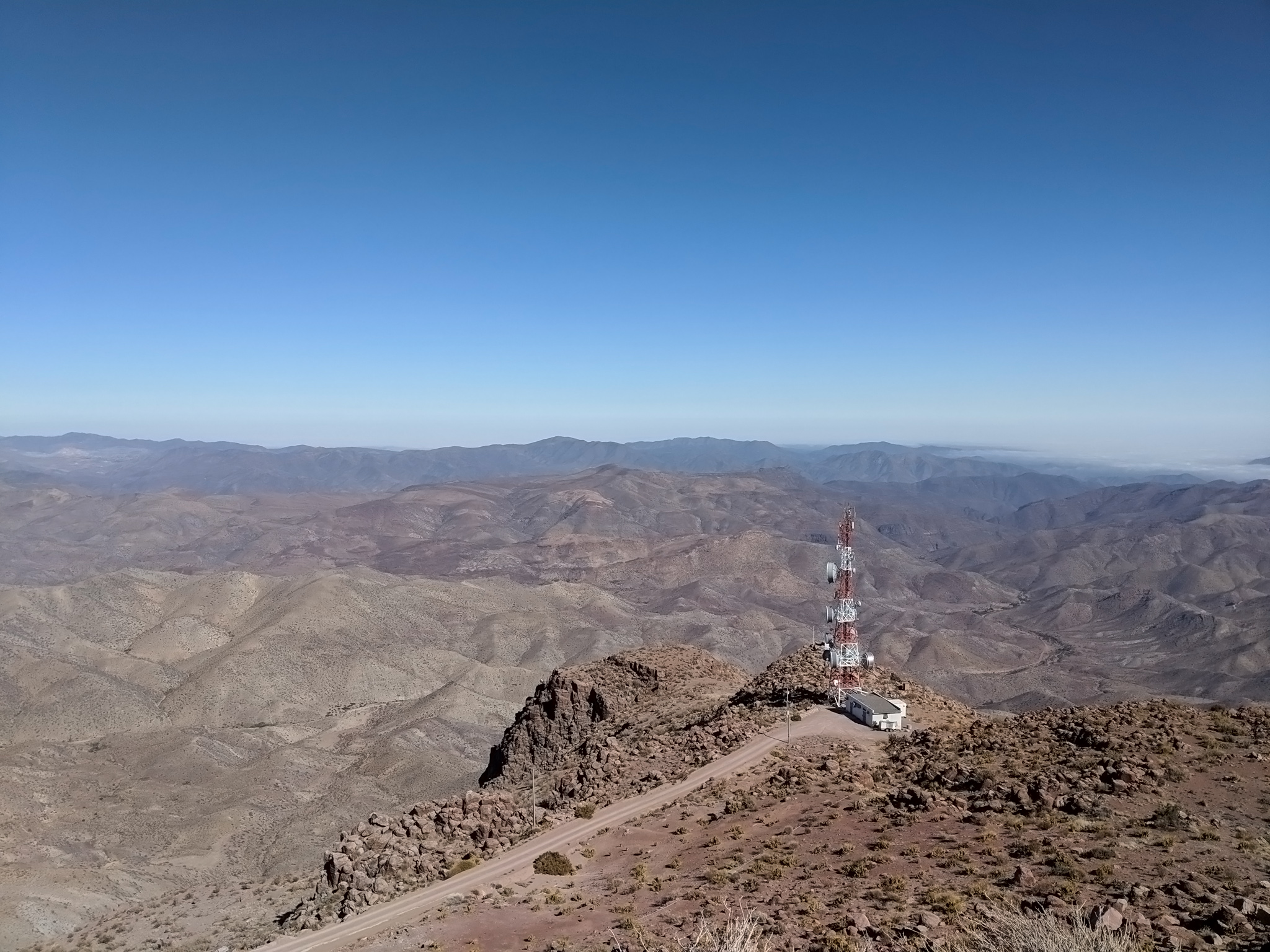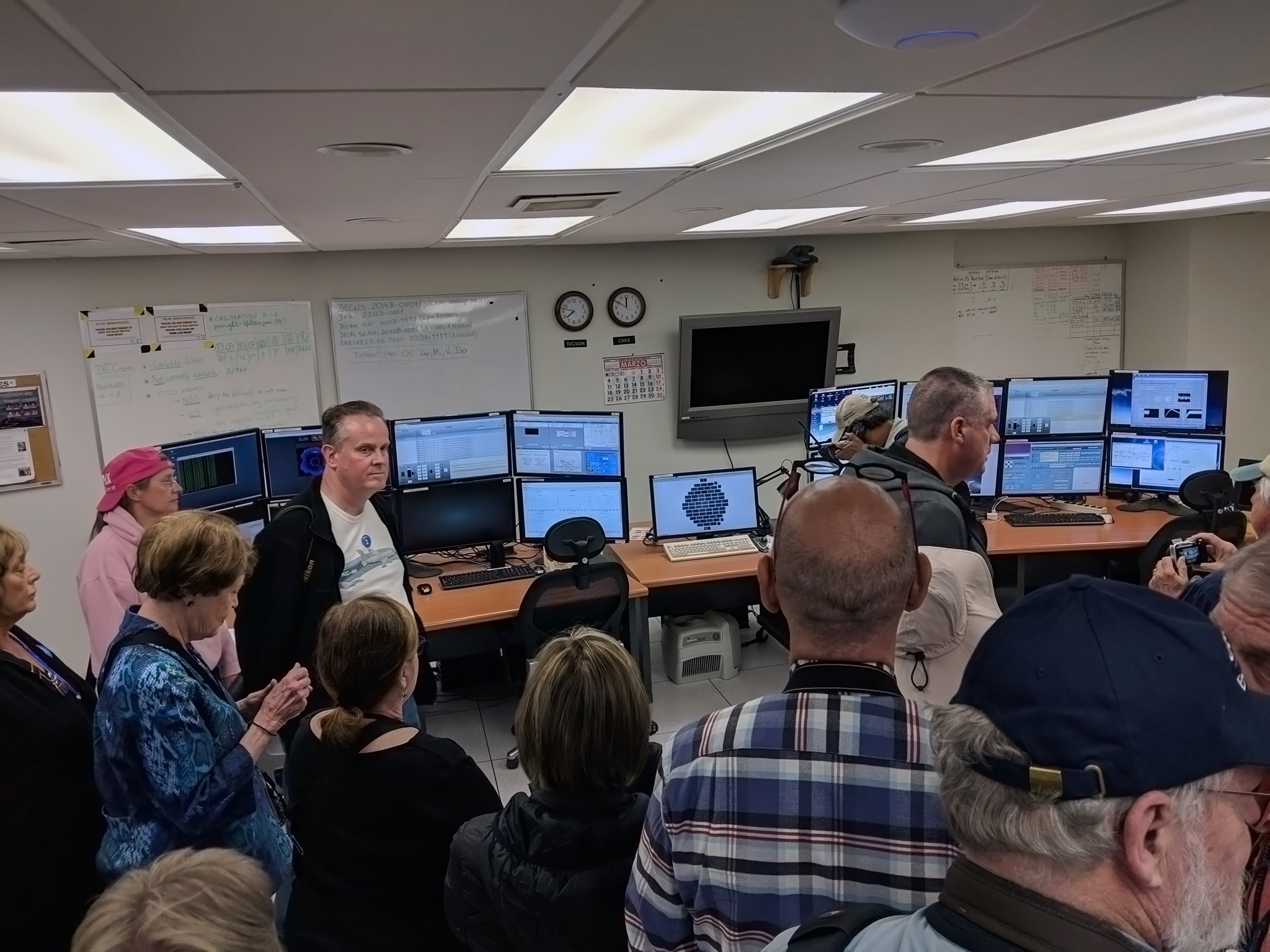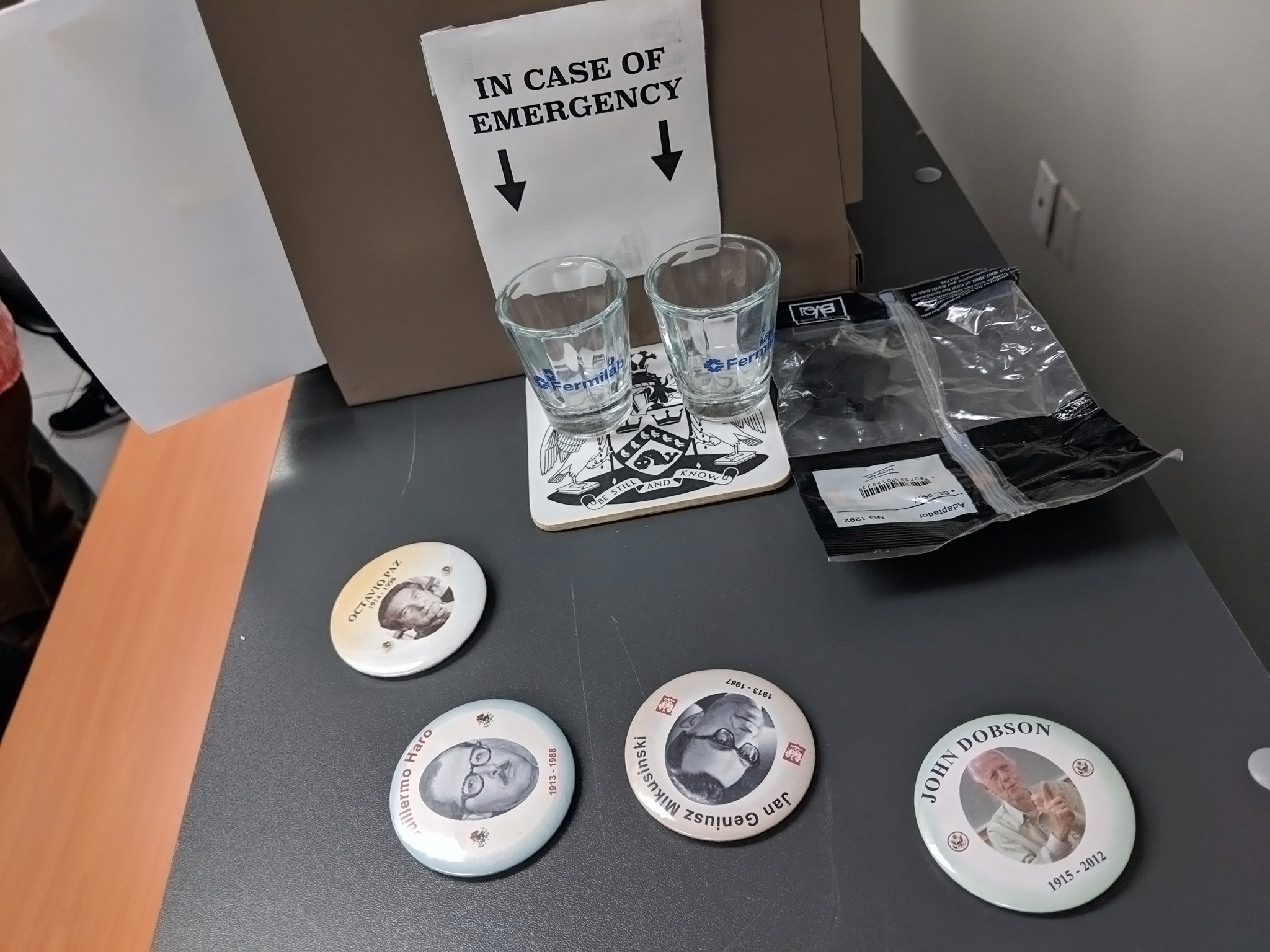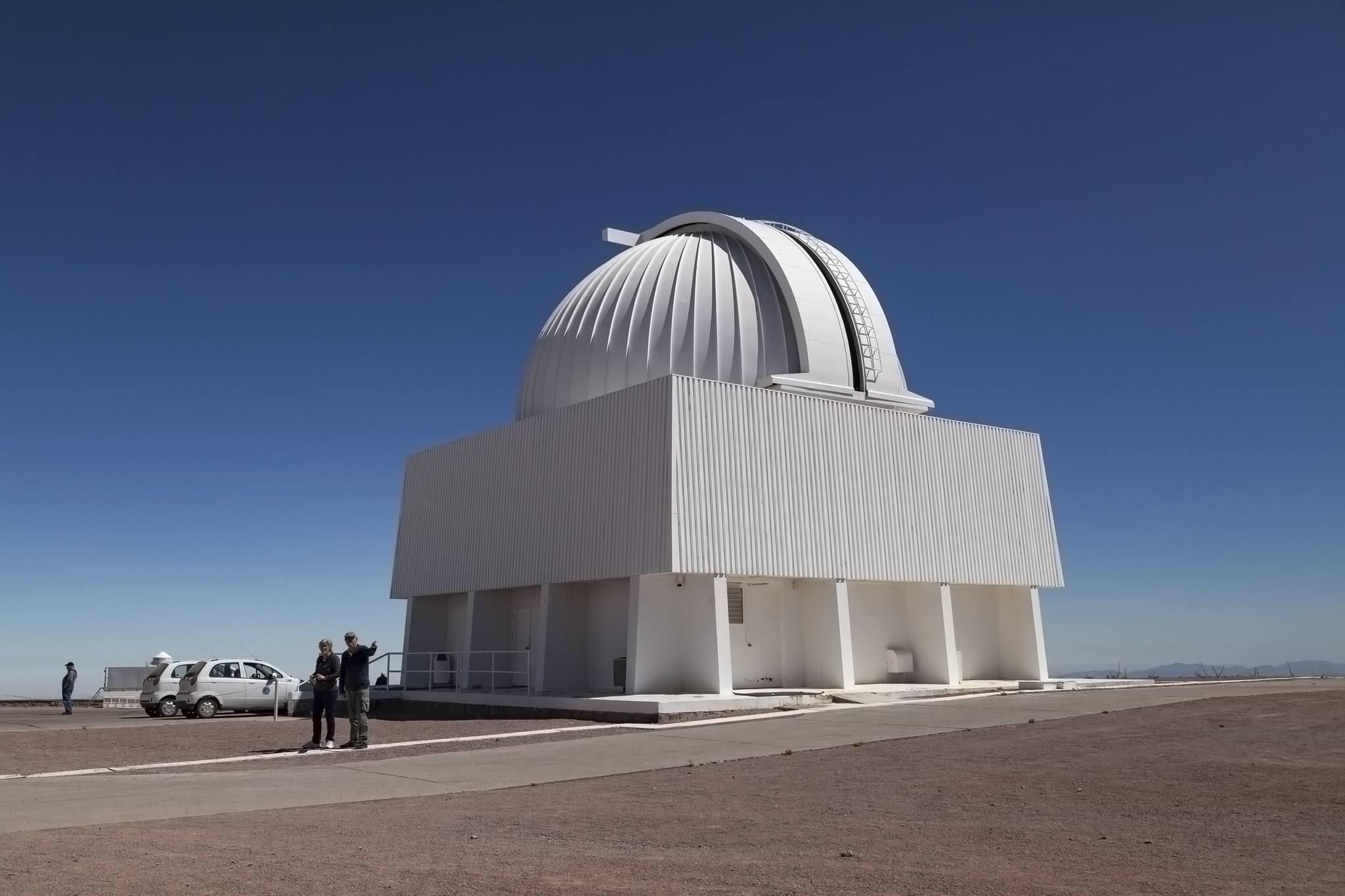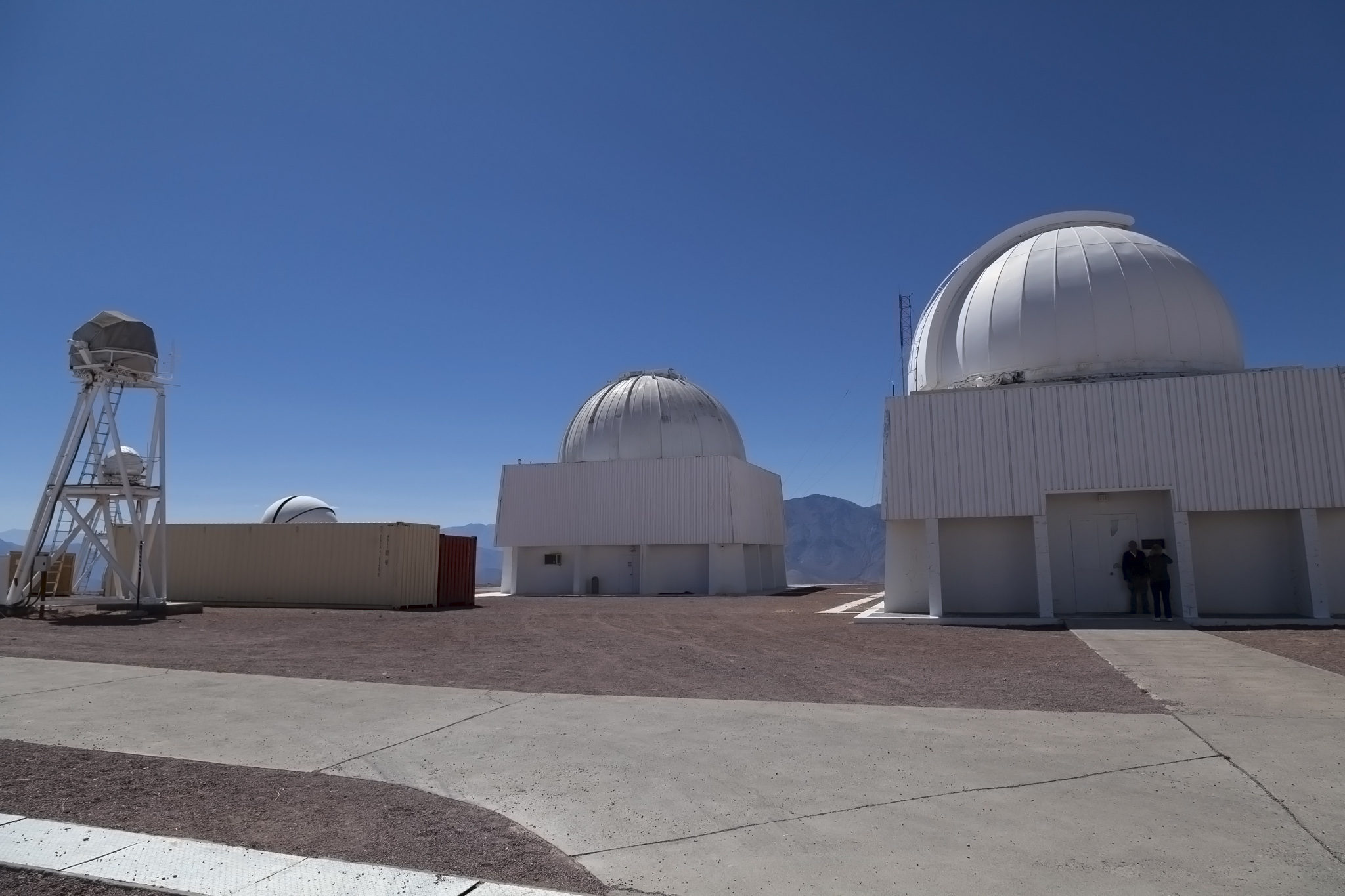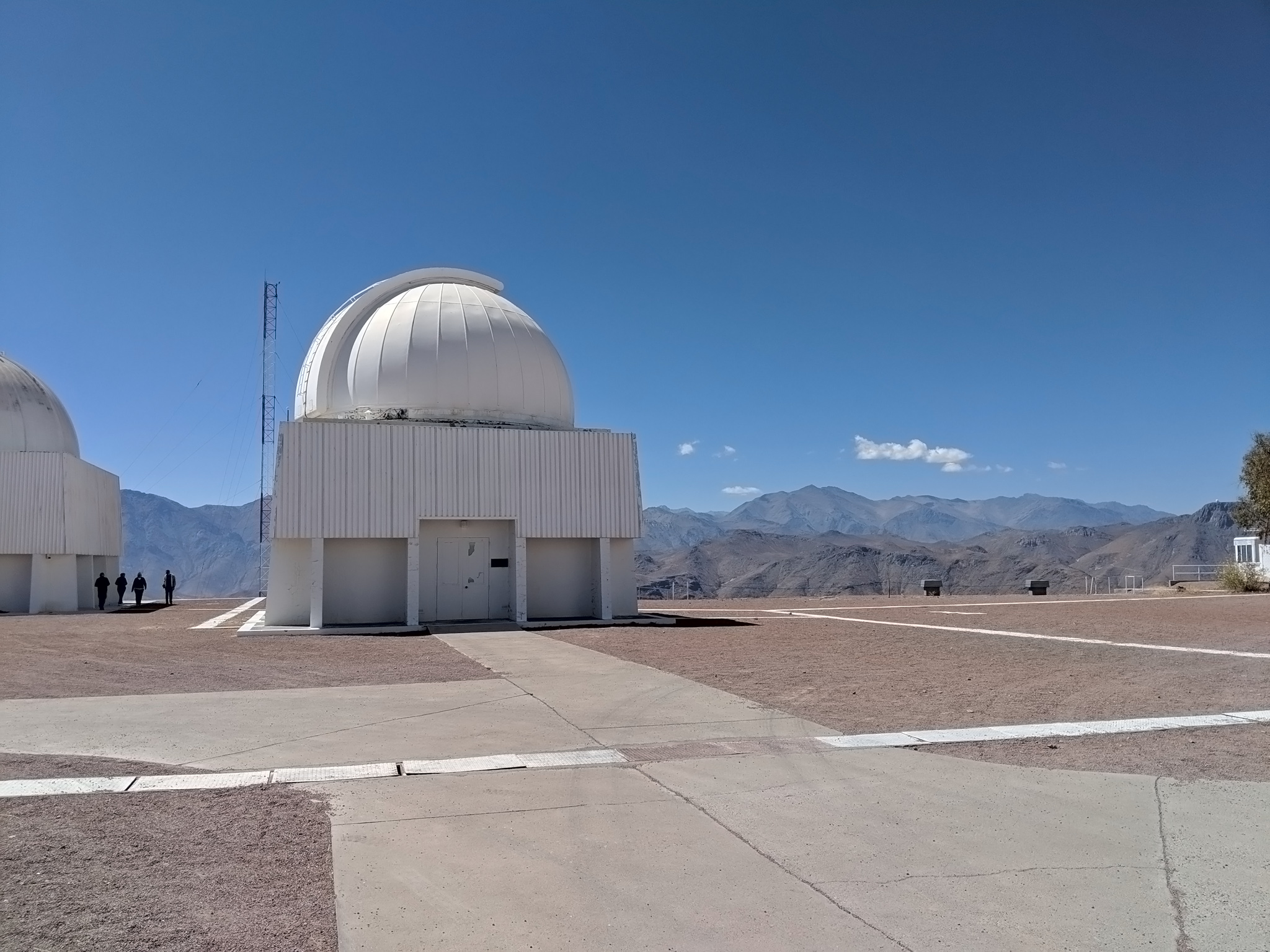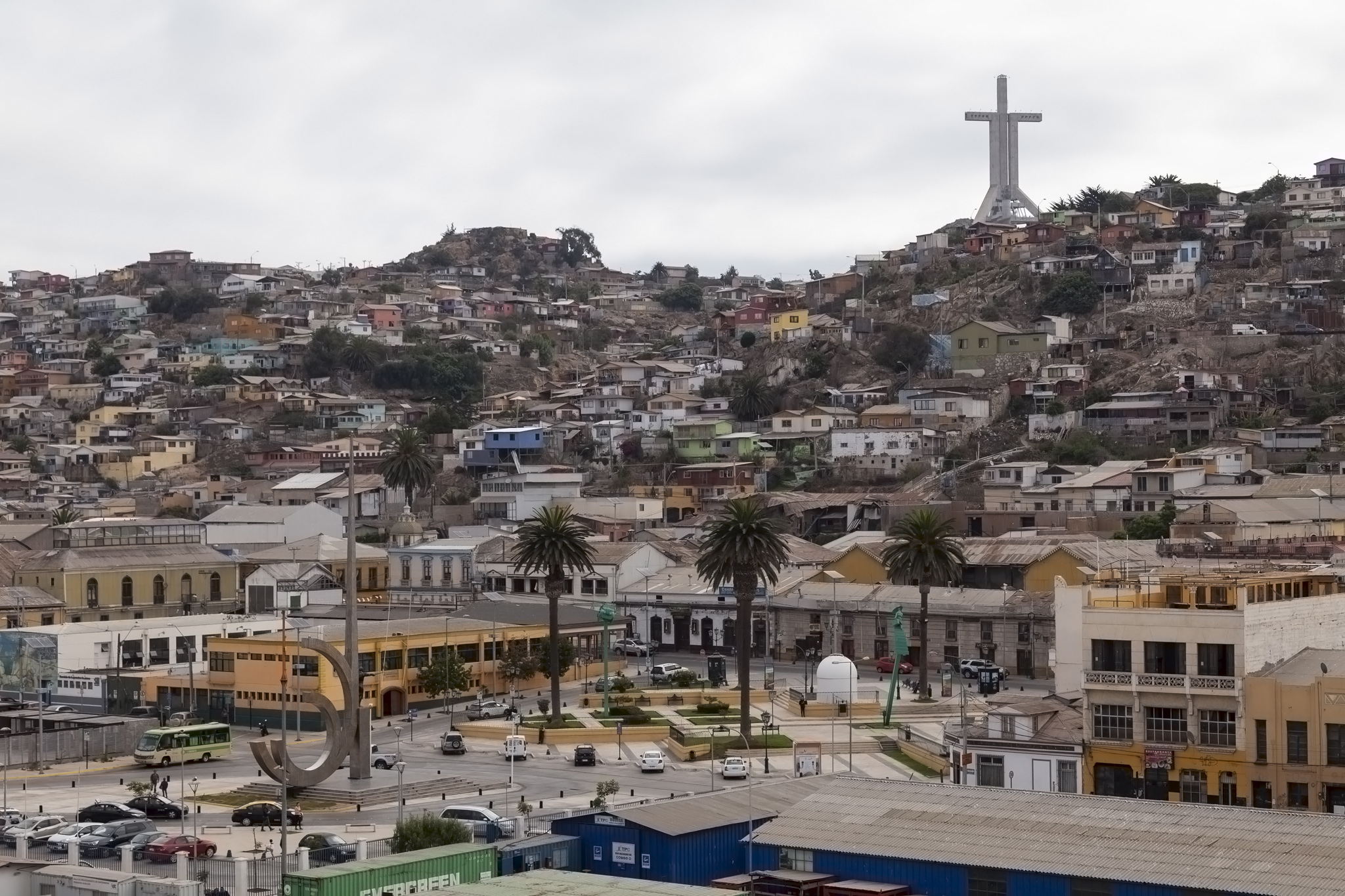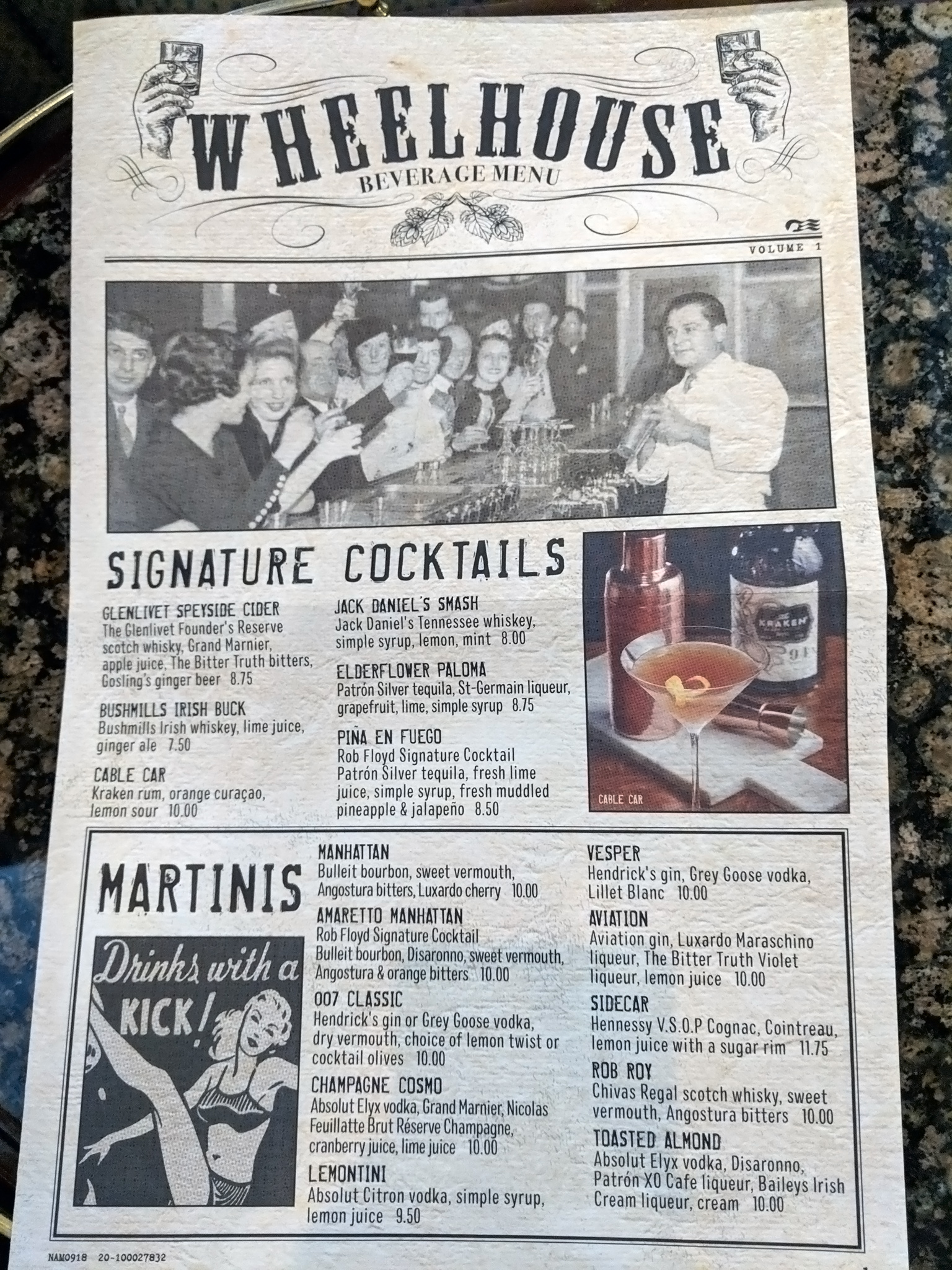The first port stop of our second cruise in South American waters aboard Star Princess was Coquimbo, itself in the Coquimbo Region of Chile and just to the south of the region’s capital, La Serena. Princess offered a number of shore excursions that included seeing the sights that both La Serena and Coquimbo had to offer but we had our own sights set some distance inland; we were going to visit an observatory.
Chile is well-known for its observatories. The dry and clear conditions present at its high altitude landscapes make it a perfect spot for locating huge telescopes with less of the atmosphere to peer through at the distant reaches of the universe. My wife and I are at the nerdier end of the interests spectrum and we also like seeing things or taking those sorts of trips that fall within the less usual category so that we have something unique to talk about, and on a cruise we really like to mix up the types of things we see too. It’s not that we like being the centre of attention – perish the thought! – but we also don’t like being considered dull and unoriginal when boring the hell out of friends and family when we get back. Plus, the more distinct you make your trips the easier it is to remember them and not have them all merge into one big pile of spaghetti holidays.
So, we hit five islands on this cruise. Do you want to know what we did?
I suppose I’d better get it over with, yeah.
On the first island we went to a beautiful, golden beach.
Nice. The second?
We went to a beautiful, golden beach.
Right.
On the third island we went to a beautiful, golden beach.
I see.
The fourth island was where we found something absolutely magical.
Do tell!
A beautiful, golden beach.
Oh God.
The last island was the one with the volcano and the castle on its rim.
At least that sounds fascinating.
Probably, but we spent the day on a beautiful, golden beach.
We didn’t see any beautiful, golden beaches along Coquimbo or on the way to and through La Serena as we drove to our excursion destination but the amount and variety of wildlife was instantly noticeable and remarked upon by our guide. This tiny clip (temporarily removed) shot from the bus on the exit from the port at Coquimbo shows just some of the wildlife in the region with red-headed vultures on the railings above a sea lion that we’d been told had come ashore in recent weeks and begun making itself at home along the promenade.
The drive to the observatory was a long one and while it remained dry and dusty it also got brighter and clearer as the bus got closer to our destination. We’d started the day under low cloud, a common occurrence in any place that gets hot during the day, cools down at night, and is close to water – this explains why I’m not a morning person too – but we knew from experience of visiting Chile a few years earlier that visits to altitude took care of that problem. The landscape was one of not much vegetation and plenty of shades of beige but compared to our long bus ride through part of Patagonia in Argentina in 2016 it was still actually interesting, no doubt because it wasn’t unending flatness to the horizon. The hills we passed by and the smaller mountains we could see were part of the Andes range which probably helped bestow upon them a level of wonder that possibly doesn’t come across in this short bit of footage (temporarily removed).
Short of the town of Vicuña our bus turned off the Route 41 road it had been following and headed south. The road started to climb and snake as it followed several watercourses that run like veins through the scrub landscape. At one point we came alongside a large dam which had trapped the water in an artificial lake; mist rose from it as the sun rising over the mountain ranges heated up the cool surface, and the whole effect was enchanting. You’ll have to take my word for it, though, because the sun was directly behind it and both throwing its energy at our windows directly and reflected off the lake. I knew it would be a waste of time and precious battery power to even think about taking a photo.
A little while later we came to the bottom of the main road leading to the various observatories in this part of the Chilean mountainscape. Vehicles aren’t permitted up this road without a guide and he hadn’t arrived yet so we were able to get out and stretch our legs. In the first of the photos below you should be able to see the domes of the observatories on the distant mountain top.
Our guide duly arrived and we were off once more on a slow, winding ascent. On several occasions we had to stop completely for our driver to get out and manhandle a boulder out of the way before we could continue. Our guide, meanwhile, told us a little more about the science setup in Chile, how international companies and governments would effectively pay to have their observatories built and maintain the infrastructure, and how they would grant Chilean scientists time on the telescopes in return.
We also got an explanation as to the flora in the region as we started to pass cacti as we meandered upwards, some quite plain, others with white flowers, and many with bright red flowers. “Do you see the three types of cactus here? Which one do you prefer? The red one? Ah, interesting. It is pretty, no? The birds think so too as that is the one they are attracted to most. They land, they feed, they carry spores. Yes, spores, because the red flower is a parasite and it is spreading everywhere.” Like most people, I’ve always wanted to be in a sci-fi/horror movie about a group of people heading to a remote outpost while a parasitic lifeform spreads across the landscape towards them and this was the closest I’ve got to that dream yet.
Cerro Tololo Inter-American Observatory
And so we finally reached the top and our excursion destination, the Cerro Tololo Inter-American Observatory. We were 2207 metres above sea level with breathtaking views across the Chilean mountains and landscape and a crystal clear, blue sky from horizon to horizon. Main construction on the site lasted from 1963 to 1974 although some of the smaller buildings and facilities dotted across and just below the small plateau were added later. The most prominent structure was the housing for the largest of the telescopes on the site, the 4-metre aperture Víctor M. Blanco Telescope, which is primarily used to survey the sky for evidence of dark energy.
The Small and Medium Research Telescope System (SMARTS) consortium manage the telescopes at Cerro Tololo under 2 metres in diameter and it was to the largest of those, the equatorial-mounted, 1.5 metre Cassegrain reflector that we first went. Through a doorway and up a narrow, steep set of steps took us into the dome of the telescope where we were invited to look around for a few minutes and ascend another small set of steps onto a walkway that ran around the interior of the rim of the dome and surrounded the telescope mount.
We gathered around as our guide talked about the sorts of things that the telescope was used for, which we’d been expecting, but then we were asked to move away from the exterior wall of the dome and come closer to the railings. There was some copper piping around the interior of the dome that I’d already bumped into twice because a) the walkway was fairly narrow and there were quite a few people milling around on it, picking random directions in which to walk, and b) I’m a clumsy bugger when I’m gawping at interesting things. I initially thought that they were sensitive and that maybe we (more accurately, I) had triggered some alarm but this wasn’t the case at all. Instead, we were treated to what I can best describe as a science rollercoaster ride. The floor mount was raised, the doors were closed and reopened, the dome was rotated, the telescope alignment was adjusted, and it was immense fun. I know that you’re probably thinking “Mark, that doesn’t sound like the most fun, to be perfectly honest” but let this video (temporarily removed) show you the error of your ways.
See! As I’ve mentioned on plenty of occasions, we’re experiential travellers and I’d like to think that we’re in a very small subset of people who’ve had that sort of experience.
Once the floor mount had been lowered and a safety gate unlocked we were then led down and out of the 1.5 metre telescope dome, across the top of the site, and into the larger observatory building. First stop was either the control room or a flatscreen monitor showroom on the ground floor where we received some information about the sort of work that took place here.
I don’t like to get in the way of other people when we’re on excursions, preferring instead to have them in my way so I can bitch and moan about it later, so we stood at the back of the room. This gave us sole viewing of the observatory emergency equipment positioned there, equipment we can relate to and which meets with our full approval.
It was then time to see the 4-metre telescope in this building which required an ascent of eight floors. Luckily, that was by elevator but with the elevator only holding about eight people at a time there was a wait for several groups to go up and the empty cars to return. Beside the elevator was a box containing keys for all the doors in the building and an attractive piece of artwork on the wall.
The keys were used to ensure that all doors between the telescope housing and the ground floor were locked at night when the telescope was in use. When it comes to taking sensitive readings every effort is made to reduce any interference and that includes air pressure changes that can happen when a door is opened so the building is empty when in use and everything is controlled remotely.
There was something of a TARDIS quality inside the dome of the Víctor M. Blanco Telescope. From outside it had appeared big, yes, but not massively so against the vista of Chile around it. Once we’d entered the ground floor, both the control room and the elevator were tight squeezes for our excursion group. But in the dome itself it was like walking into a vast cavern, the experience multiplied by the echoing nature of the space and by the cool temperature, necessary for the telescope’s operation. We had been advised that warm layers might be necessary for this visit to the telescope and there were clearly some people who felt the chill enough to wrap up. We found it quite pleasant but we are fans of the cold anyway.
Unlike at the smaller telescope, the doors were kept fully closed during our visit. We were told that not only was this dome not opened during the day but that special care had to be taken when the moon was in the sky as the brightness of our planet’s natural satellite would damage the sensitive camera equipment.
This short video (temporarily removed) has some footage from both outside and inside the 4-metre telescope at Cerro Tololo.
We made our way outside in one of the first groups to use the elevator this time so that we would have more time to gaze across the landscape from our high elevation once more while we waited for everyone else to emerge. The sky was fantastically blue, the buildings blisteringly white, and the mountains disappearing into the distance exuded a sense of deep age that felt like the perfect setting for equipment peering into the history of universe. Other observatories on nearby mountain tops could be seen from our position.
We stuck to the shadows of the buildings as much as possible, not because it was particularly hot – it was actually really nice, temperature-wise, and the naturally dry heat meant it wasn’t uncomfortable at all – but because we knew from previous experience just how much more potent the sun’s rays were with a thinner layer of atmosphere above protecting us.
Lunch In Vicuña
That marked the end of our fascinating trip to the Cerro Tololo Inter-American Observatory so we reboarded our bus and headed back down the twisting, dusty road that had brought us up here. It wasn’t a whole lot faster heading down than it had been going up but at least all the boulders had already been cleared away this time.
As this was a full day’s cruise excursion there was an included meal and this took place in the town of Vicuña. We had a short drive through some of the streets initially so that a few points of interest could be pointed out. I won’t pretend to be a fan of poetry but the apparently famous Chilean poet Gabriela Mistral was born in the town in 1889 and we passed by a square named in her honour; the town has a museum dedicated to the poet too.
Our lunch was huge. Far too much to finish, in fact, and not helped by a bread thing that might actually have been drier than the landscape we’d found ourselves in for the day. It was all very nice, though, and was accompanied by water, Chilean wine, and pisco sour, something for which this region of the world is famous. We do like to drink national drinks in their nations but this wasn’t a sentiment shared by some fellow cruisers with whom we shared a table in the restaurant. We did very well for pisco sours during this meal.
Star Princess, Coquimbo
All that remained was for us to return to Coquimbo, passing through La Serena once more, and get back on Star Princess.
Eagle-eyed and regular readers of this site might have noticed that the quantity of photos accompanying what was a spectacular trip is quite clearly lower than normal for me, Sir Photosalot. Very regular readers of this site will know the reason for that. As explained in the previous post covering the start of this cruise, our luggage hadn’t accompanied us to Chile. Importantly, because of a luggage-packing technique that has subsequently been consigned to an oubliette and covered over with concrete, my camera battery charger was therefore missing and I’d engaged in photo rationing despite my wife’s sensible reminders that we’d be able to buy a new camera in a worst case scenario so I may as well treat everything as normal. I couldn’t, though. I’m a cautious bugger by nature.
As our bus arrived at Coquimbo port we saw that there was a cage of suitcases on the dockside. We guessed that this was other luggage that had been delayed and could clearly see that our cases… were not amongst them. However, in a mad moment of positivity I mentioned to my wife that they might have had a second delivery of cases while we’d been off engaging the science portions of our brains because it probably depended on where people had flown in from as to when things got sent onwards. And I was right. As we stepped into the corridor aboard the ship we could see our cases sitting outside our room. Please picture two grown adults skipping and dancing and making silent whooping noises so as not to disturb anyone or draw attention to themselves as they make their way to their cabin here.
The sense of relief – only tempered fractionally by realising I should have listened to my wife (motto for life) and gone mad with the camera as usual – is almost impossible to describe. I know we’re not the only people in the world to have had luggage go missing so if you’ve ever been in the same situation then you’ll know the weight that lifts when it turns up.
After unpacking and while waiting for my wife to go through the shower ahead of my turn I headed out onto the balcony to take some shots of the city and record a little bit of video on my super-cheap video (temporarily removed) camera of the band entertaining the ship at dockside.
The skyline of Coquimbo was dominated by the Cruz del Tercer Milenio (Third Millenium Cross), an 83-metre tall monument with 2000 steps leading to it (prayers are more effective if you’re out of breath, sweating, and cursing between gasps). In addition, we’d also seen a lot of street art in the area as our bus had passed through twice during the day so Coquimbo and neighbouring La Serena are probably places that we could find things to interest us and explore more if we returned to this part of the world.
Wheelhouse Bar Menu
Where our first day had been stressful thanks to flight problems and lost luggage, our second day of this cruise was one filled with fabulous sights and utter joy. Still full from our massive lunch earlier we had a later dinner than even we typically go for and this gave us time to check out the Wheelhouse Bar for the first time where we discovered that, just like Crooners, it had received a new drinks menu too. We had one drink in there and another in Crooners before dinner then had a relatively early night for us again as we’d been up fairly early for the trip to the observatory.
We would have two sea days back-to-back next, giving us plenty of time to fully unwind, properly align our body clocks with the new timezone, and appreciate all the ship had to offer. That’s not exactly a euphemism for “check out all the bars” but there’s certainly some overlap.









